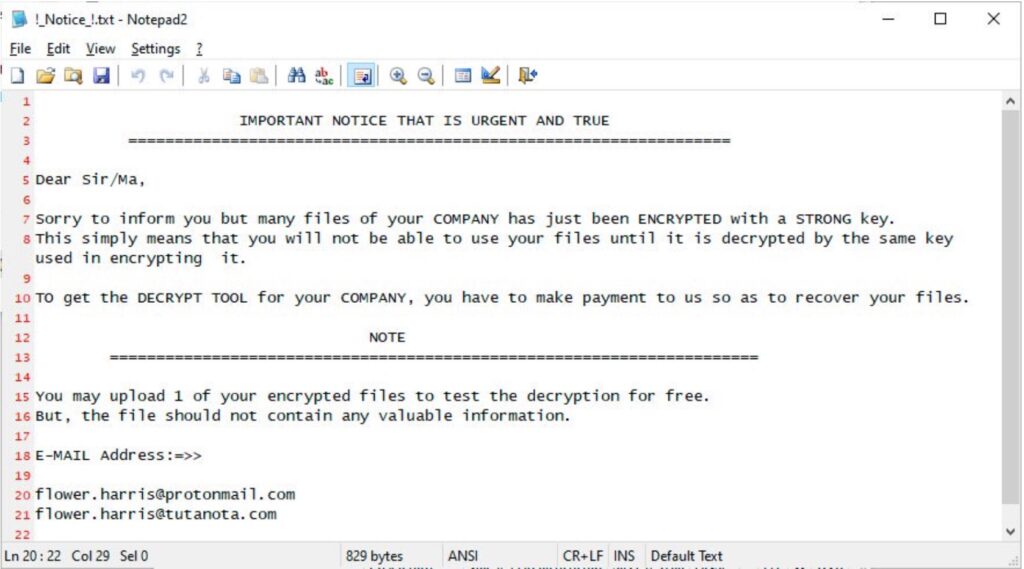Ransomware as a Service (RaaS)
Preventing ransomware involves a combination of education (e.g., training users not to click on suspicious links), keeping systems up to date, employing reputable security solutions, and maintaining offline backups. If you do get caught, responding to an attack requires careful consideration, including whether to pay the ransom (often advised against) and how to restore systems.
Contact us if you need help or book some time with a security professional using the link at the bottom to setup a consultation.
Ransomware-as-a-Service (RaaS) is more complex with significant implications for cybersecurity defense. In the past, if a company is hacked by a well known agency, and the decide to pay the Ransom, odds are they will get their data back. With RaaS, you never know who is behind the attack or if they will make good on the deal or ask for more once you pay. This of course adds a whole new level of stress.
Cybersecurity is an ever-evolving field, and the important topics can shift rapidly as technology advances and new threats emerge. Ransomware as a Service or RaaS is emerging more and more today giving less skilled criminals a way to conduct crime while the source agencies sit back and collect a commission – which makes sense because they have such a hard life….<not>
Before we get to RaaS, lets cover basic Ransomware first:
What is it? – Well if you don’t know, Ransomware is malicious software that encrypts files or entire systems, rendering them unusable. The attackers then demand payment, often in cryptocurrency like Bitcoin, to provide the decryption key.
Here is how it goes and how its explained in RaaS handbooks sold to perspective beginner hackers:
Step one, Infection: Ransomware can infect a system through various means, such as email attachments, malicious advertisements, or compromised websites. A common attack is Phishing emails that deceive users into downloading an attachment or clicking a link are common methods. Once the infection is in, it may begin to populate itself, covering more ground and strengthining it’s foothold
Then we Encrypt: Once on a system(s), the ransomware encrypts files using strong cryptography. Victims are typically presented with a “ransom note” explaining how to pay to regain access.
Payment: Attackers usually demand payment in cryptocurrencies to maintain anonymity. Payments can range from hundreds to millions of dollars, depending on the victim. Usually its a polite message like “we are really sorry to inform you but you have been infected…”

Leaving the last step: To the infected company has to gage the Impact, make a choice (and there is usually a time limit) on whether to pay up or start the rebuild process: The impact can be devastating, particularly for small organizations. Critical data can be lost, operations can be halted, and recovering from an attack can be expensive and time-consuming. Paying can hurt too and often times impact insurance renewals for years to come.
Ransomware-as-a-Service (RaaS)
Ransomware-as-a-Service is a business model where ransomware developers offer their malicious products as a service to other criminals. This makes it easier for individuals without technical expertise to carry out ransomware attacks.
Here’s how RaaS makes things more interesting:
Increased Accessibility: RaaS providers create and maintain ransomware tools, making them available through dark web marketplaces or other channels. They might charge a fee or take a percentage of the ransom.
Affiliates: Individuals or groups can become affiliates, using the ransomware tools to launch attacks. They don’t need to know how to code the ransomware themselves; they just need to know how to infect targets.
Support and Updates: Yup, RaaS providers might offer support and regular updates to their tools, much like a legitimate software provider. This continuous development helps the ransomware evade detection by security tools. They even maintain a help line and chat in some cases.
Proliferation of Attacks: By making ransomware accessible to a broader audience, RaaS has contributed to the significant increase in ransomware attacks. It’s effectively democratized a very harmful type of cybercrime.
Legal and Ethical Considerations: Law enforcement agencies are actively working to shut down RaaS providers and prosecute those involved. However, the anonymous nature of these transactions and the international scope of the crime make it a challenging issue to combat.
Conclusion
Ransomware and RaaS represent a significant and growing threat to individuals, organizations, and governments. Combating these threats requires a multifaceted approach that includes technological defenses, legal action, and international cooperation. The rise of RaaS has made ransomware attacks more accessible to criminals without technical expertise, further emphasizing the need for robust cybersecurity measures and public awareness.
If you find yourself experiencing an attack, the first step should always be to call someone for help (Hint -The first step is not the insurance company…). We are also happy to share specific information on known RaaS organizations and assist with how to defend or recover it needed
Lionetti Consulting – (949) 409-6625